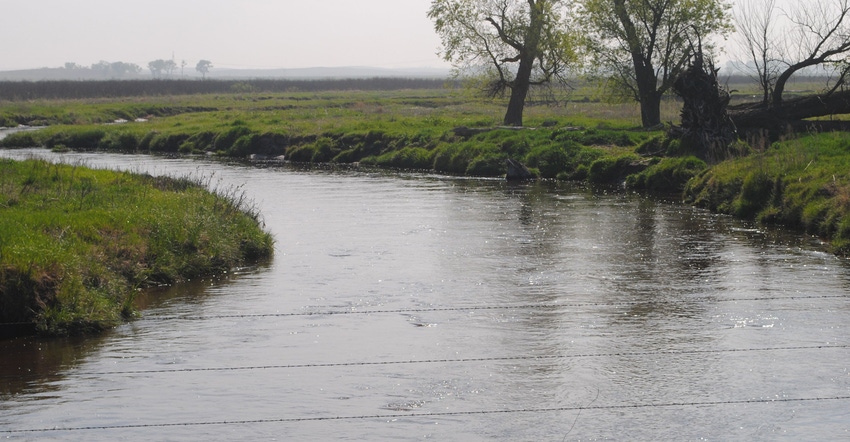August 31, 2017

They say that good fences make for good neighbors. Fences keep the cows on your side, on your property. But we all know that cows and calves have other ideas, and even the best fences can be breeched once in a while. During my full-time farming days, I spent so many late evenings chasing cows from growing cornfields or trying to find a hole in the fence where the cows had not only decided to crawl out, but were busy building a highway to make the escape easier next time.
I spent many hours fixing the dreaded creek fences on the West Bow Creek when high water and debris wiped them out. Of course, the temperature was often at least 90 degrees and the humidity was at a minimum of 90%, with absolutely no breeze down in the creek valley. These experiences have led me to a few undeniable truths about fixing creek fences:
• Never trust a sandbar. Fixing a creek fence alone one afternoon, I had waded out into waist-deep water to string a strand of wire across the stream. Carrying my hammer with me to use when I reached the other bank, I set the hammer down on a sandbar in the creek so I could install a steel post in the middle of the creek and tie the wire to it. Suddenly, the "sandbar," which was actually a very large snapping turtle, began to swim away with my hammer on its back.
• Use the resources you have in front of you. When you are alone fixing creek fences, it isn't always easy to swim across the rushing water and trudge up the 10-foot-tall banks to fetch tools, wire or posts. So, you often have to make do with what you have. I have used large, fallen cottonwood trees as a makeshift fence, providing a barrier for cows and calves that is just high enough to prevent them from jumping over. That worked well until a big rain one spring washed my fence away. I've used salvaged junk deposited in the creek valley for posts. I've faked the cows out with boards that I found, to keep curious cows in the pasture while I ran home for supplies.
• The creek is always deeper than you think. Our little branch of the West Bow is quite narrow. In many places, it is only a few feet across. Usually, the stream is just wide enough that I can't quite jump across without getting one of my boots wet. However, it is extremely deep. Most of the time, it worked best for me to wade into the water, after checking the depth ahead of my feet with a post or long stick. But after a horrific two-day storm in 1999, I nearly didn't make it across when I jumped into the water to quickly get across to stop cows that were crawling into a cornfield right in front of me. The water was high and much deeper than I thought and was rushing very fast, so I clung to a floating log and maneuvered safely to the other side, out of breath and realizing how dumb it was for me to try that.
• Watch out for creek critters. You never know what you will see while fixing fences in the creek. I've reveled at the sight of blue herons fishing in the water or bald eagles perching in a high cottonwood. But, I've also been surprised by badgers, raccoons, deer, coyotes, fox, and yes, skunks. Fortunately, I never encountered a mountain lion — only a few tracks.
I no longer run cattle on the West Bow, but there isn't a hot, humid summer day that goes by, especially after a major thunderstorm, that I don't recall those many lessons learned fixing creek fences.
You May Also Like




